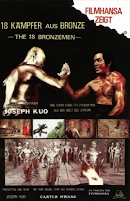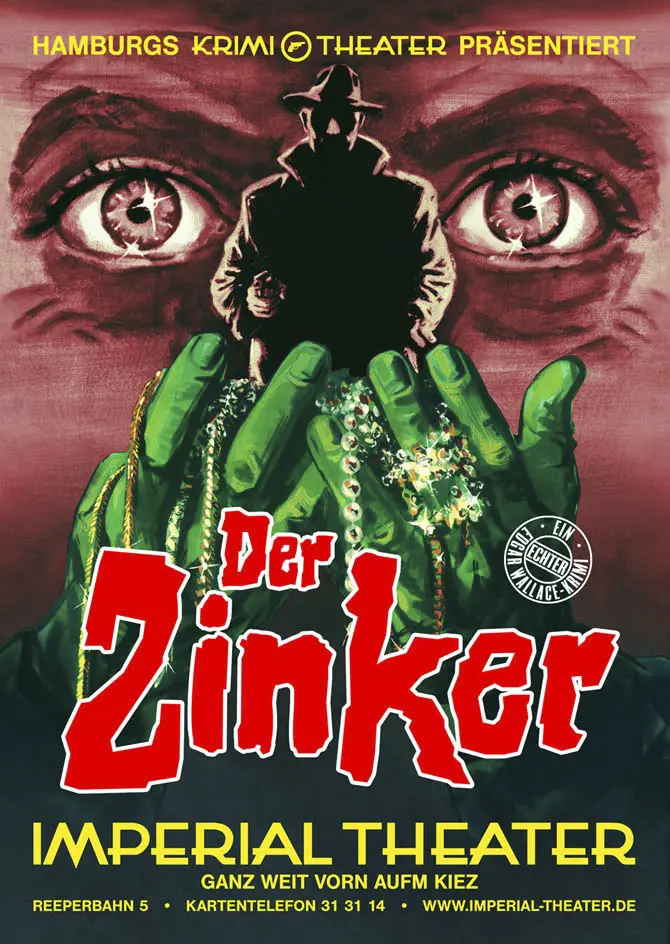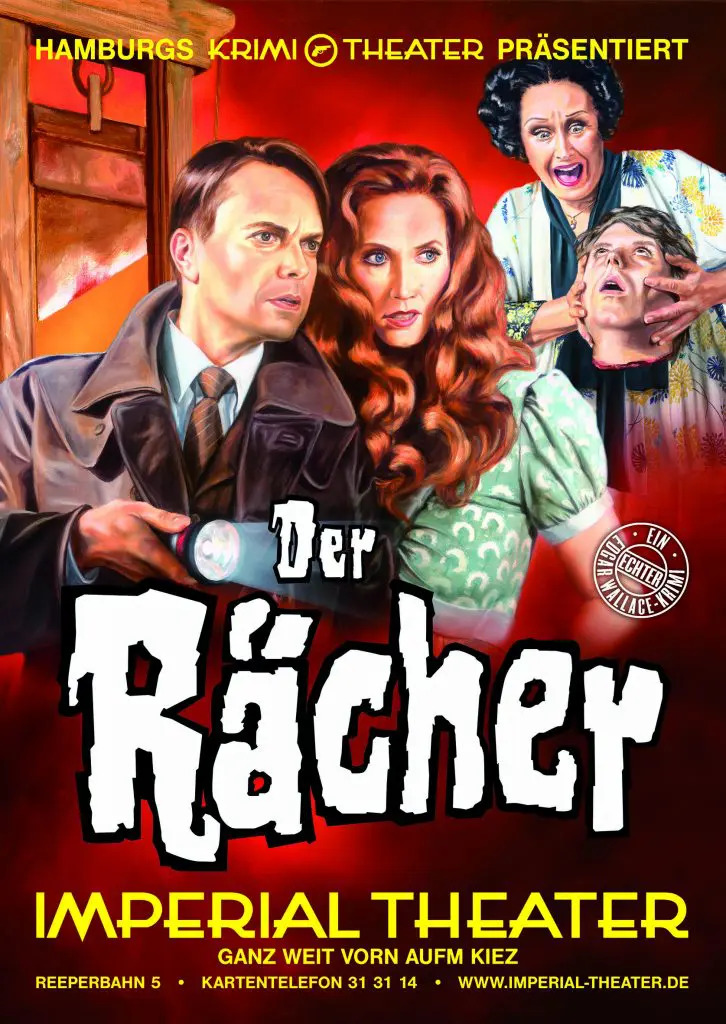This is my personal grindhouse experience. Living in Munich in 1985/86 I was privileged to find out that in the run-down Stachus Kinocenter with its 4 movie theaters, they would hold "long nights", grinding down the most worn-out prints of whatever movie they had lying around (and Munich was one of the capital of European trash cinema). So I went there and spent the nights between hobos and whores, junkies and middle-aged men in trenchcoats. They started at 10 pm and went on till 4 a.m. providing more than one customer with a fairly cheap place to stay. It was 12 DM (around 4 US-$ that time) for 12 movies. So I sat down and watched them all, uncut. Usually I swapped theatres if one movie was too bad.
So here are all 12 of them, that I was able to see:
1. Bobbie Jo and the Outlaw (USA 1976)
Cinema 1, 22:30 Todesduell auf dem Highway
It's Wonder Woman Lynda Carter making every schoolboy's dream come true to star in this skin-n-crime flick about a country star wannebee who winds up in a Bonnie and Clyde situation.
Verdict: GEM
2. She (USA 1984)
Cinema 1, 00:15 S.H.E. eine verrückte Reise in die Zukunft
What have we got here. This is actually a new movie, going straight to the gutter. This must have bombed terribly. Today, this must be b-movie heaven. Red Sonya's Sandahl Bergmann going all in in a very, very bad movie. Problem is, the producers actually thought it was good and gave it a big-time treatment. This ended soon here in this run-down theatre in front of a lot of people who could not care less.
Verdict: GEM
3. Deadline Auto Theft (USA 1974-83)
Cinema 1, 01:45 Auf dem Higway spielt die Polizei verrückt
Rehash of the 1974 movie "Gone in 60 Seconds" about the cat-and-mouse game between an LAPD Officer and a serial car thief. Emulating Jess Franco, the director used the best (and most expensive) scenes of the first movie and shot some new material around it. Who can blame him.
Verdict: GEM
Let's switch to Cinema 2, where they start off the evening with.... tata:
4. Man-Eater / Grim Reaper / Anthropophagus I (Italy 1980)
Cinema 2: 22:15 Man-Eater, der Menschenfresser
Yes, there it is. I saw it. On the big screen. It acutally was big and actually a lot of people came in to watch it. It was uncut. I was there. Oh man.
All of those complaining about the film did not see it in a cinema. I was actually scared and I thought it was a pretty well made movie. Maybe it was my young, impressible mind, but I still hold that movie in high regard. I never watched it again though. It could only become worse. I did see the Andreas Schnaas remake. That was bad.
Vertict: ALL TIME CLASSIC
5. Death Force (USA 1978)
Cinema 2: 23:45 Ein Mann wird zu Killer
I did not have to look it up as I still remember that film. It's about a vietnam vet who shoots off heads with his shotgun when the local incestbreed back in good old bible-belt mob him (or was it the mafia and he owed them money???). Always tried to get it in the very memorable german dub, but obviously this market is far too niche (like!!).
Verdict: SOLID and up for a rewatch before I die.
addendum: Now I watched the original trailer and I am very sure that this is not the movie I saw. .... I have to dive into this. Maybe they switched films without notice... hmmmm.
6. The Retrievers (USA 1982)
Cinema 2: 01:30 Zum Töten abgerichtet
With a german title going: "Conditioned like dogs to Kill", one would have expected more. I have 0 remembrence of this film. And even the IMDB is not very helpful. It's about a guy who joins some kind of special forces and kills targets. eh?
Verdict: USELESS
Time to hop over to Cinema 3 where they reuse the old Hongkong MA Films for their really, really final run (the copies were actually VERY bad!)
7. The 18 Bronzemen (HK 1975)
Cinema 3: 22:00 18 Kämpfer aus Bronze
Nowadays looked upon as some kind of semi-classic, but honestly, I could not care less. The usual stuff with fake beards and fake fights.
Verdict: Forgettable
8. The Return of the 18 Bronzemen (HK 1976)
Cinema 3: 23:30 Die Rückkehr der 18 Bronzekämpfer
More of the same, this time even cheaper. They did not even try to look as if they cared! But cudos to the curator of this exquisit evening, you got all 3 installments (of the same movie....) in their correct order.
VERDICT: Even more forgettabel remake of a forgettable Film
9. Wan fa gui zong yi Shao Lin (HK 1976)
Cinema 3: 01:15 Das Erbe der 18 Bronzekämpfer (The Heritage of the 18 Bronzemen)
The German movie poster reads: "After the unreachable successes of .. 7. 8. .. a new highlight". Eh well, not. Really. I really sat through them all here again to find out what I've been missing. But not a lot. I felt cheated.
VERDICT: Three out of three are bad.
Let's see what wonderful fare they offer us in the cosy cinema 4:
10. Les Plaisiers Solitaires (F 1976)
Cinema 4: 23:00 Das Erste Öffnen Junger Lippen
What a way to start of the evening in Cinema 4. While I was in CIN2, enjoying Joe's classic tale of what not to do on a lonely island, here you get an absolute classic French Porn Movie directed by all-time best director Francis Leroi. It's about 3 women experiencing frustrating sexual encounters with men before they decide that sisters can do it with themselves. The German release comes close to being a fraud: The title translates as "The first blossoming of young lips". There are NO young lips here and I sincerely doubt that it is the first opening of those lips on screen. Naah, can't fool me, canya! Besides this the film poster depicts Goddess Christina Lindberg (of Thriller) who maybe saw a filmroll of this movie stacked up in a van going candidly over the alsacian border between France and Germany (I try to establish a connection here... see?), but is NOT in this movie.
VERDICT: If you've seen one, you've seen all. But do we care?
11. Fascination (USA 1980)
Cinema 4: 00:30 Schüchtern aber scharf wie Oskar
Ron Jeremy, Candida Royalle, Veronica Hart, Sharon Mitchell, shall I say more. This is actually a GOOD movie with the added value of having the best stars of 70ies adult movies on top of their game.
I stumbled late into it as I had watched 5) to the end and then tried myself on the 18 Bronzemen. But this really blew me away. With both hands cuffed behind my back I recently rewatched it. This is a good movie.
I really tried hard to get the german movie poster, but failed...
Verdict: GEM
12. The Beautiful Girl Hunter (J 1979)
Cinema 4: 02:00 Exzesse im Folterkeller
Well it was late, I was tired, didn't want to go home, so I just kept sitting in Cinema4 and had NO IDEA what to expect. Boy oh Boy.
This very sick japanese movie about the sideeffects of being raped by one's father during boyhood and developing a very unhealthy fascintaion for the holocaust (that actually was cut out of this movie in Germany !!!) is seen to be believed.
I was actually annoyed by the constant black bars hiding what I wanted to see, but nevertheless my eyes were glued to the screen. The movie was so worn out that it looked like something out of "Emanuelle in America". and could have passed as "snuff"(thanks for censorship!!) I do remember it vividly and I know it is a classic. But I refuse to watch it again a) for the bars and b) I don't want to ruin my memories....
Verdict: SPEECHLESS
So here it is. See you next time.





















































